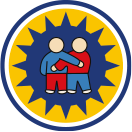Design Technology (DT)
At Park Primary School we believe that broad and balanced experiences in Design Technology is the entitlement of all children and that these experiences develop their critical thinking skills and prepare them for life beyond primary education. Through the evaluation of past and present design and technology, children develop a critical understanding of its impact on daily life and the wider world.
At Park Primary School we encourage children to use their creativity and imagination, to design and make products that solve real and relevant problems within a variety of contexts, considering their own and others’ needs, wants and values. We value individuality and creativity and encourage the children to take design risks, becoming resourceful, innovative, enterprising and capable citizens.
Teaching and Learning
At Park Primary School, we use the National Curriculum and end of Key Stage expectations to plan a clear and progressive Design Technology curriculum. Through a variety of creative and practical activities, we teach the knowledge, understanding and skills needed to engage in an iterative process of designing and making. The children work in a range of relevant contexts (for example home, school, leisure, culture, enterprise, industry and the wider environment).
When designing and making, the children are taught to:
- Design
- Make
- Evaluate
- Apply Technical knowledge
Key skills and key knowledge for Design Technology have been mapped across the school to ensure progression between year groups.
-
To safely use and explore the natural world
-
Explore the power of creativity through -
-
Construction
-
Mechanisms
-
Textiles
-
Food
-
Structures
- Mechanisms
-
Textiles
-
Food
-
Structures
- Mechanisms
- Textiles
-
Electrical systems
-
Food
-
Structures
- Mechanisms
-
Textiles
-
Food
- Programming, monitoring and control
-
Electrical and mechanical components

